Side Yard Ideas, Landscaping, and Plants
Untap the potential of this overlooked space.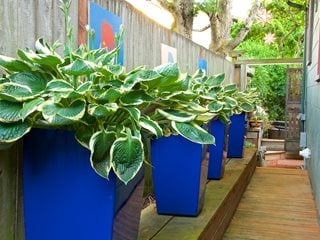
Bright blue containers, bold variegated hostas and colorful abstract paintings brighten up this narrow side yard. Designer: Kurt Beadell. Photo: Janet Loughrey.
With increased interest in making yards an extension of the home, more homeowners are adding outdoor spaces dedicated to eating, cooking, and relaxing. Since urban lots are shrinking, every square inch is at a premium. While front and back yards get most of the attention, side yards tend to be neglected, becoming wasted space.
A side yard is primarily seen as a route between the front and back yards. The area tends to be dark and narrow and present unique design challenges, so the potential to create an attractive and functional space is often missed. Here are some side yard ideas to get you started.
GET STARTED
Evaluate your side yard space.
Measure the area to get a more accurate sense of size and dimensions. Observe how the light falls at different times of the day and through different seasons.
Consider function.
Do you merely want to use the space as a way to get from front to back? Is there room for garden beds, a seating area, fountain, barbecue grill, storage shed, potting bench, children’s play area, dog run, or other feature? A deeply shaded side yard can be seen as an opportunity to create a cool summer retreat.
Look for inspiration.
Peruse online resources, books, and visit local gardens to get design ideas and to see what worked and what didn’t.
Draw up a plan.
Make a rough sketch for simple upgrades, or consult a landscape professional for a more elaborate design.
Consider scale.
Use materials that are in scale with the size of the space as well as the adjacent home.
Choose a style.
Use materials that will complement the home’s exterior and the rest of the yard. A brick pathway will go with a classic Colonial home, while clean cement pavers will look better with modern-style architecture.
PRIMARY FEATURES

A rustic rose arbor creates a welcoming entrance into the back yard and separates the two spaces. Glimpses into the back yard make the side yard feel larger. Designer: Mary DeNoyer. Photo: Janet Loughrey.
A mix of hardscape, structures, plants, and accessories will help anchor the landscape and create visual appeal. Consider some of these elements for your side yard.
Pathways.
Install a dedicated pathway to lend structure and keep walking areas from becoming worn down or muddy. Materials can include gravel, brick, pavers, or stepping stones.
Gates and arbors.
Use a structure to create privacy, lend scale, or as a decorative element.
Plants.
Choose plants based on the amount of light your side yard garden receives, also taking into account soil conditions and mature plant size.
Accessories.
To dress up a side yard space, add decorative touches such as a water feature, bistro chairs, bench, statuary, artwork, or containers.
Lighting.
Because side yards are often dark, installing pathway, spot, or string lights will make it safer to navigate, especially at night.
CHOOSING PLANTS FOR YOUR SIDE YARD
From Laura at Garden Answer
When adding plants, consider these factors:
Light.
A side yard tends to be a dark and narrow space. Choose plants that can take deep shade, or focus primarily on hardscape for less maintenance. However, some side yards may be hot and sunny if they are more open, facing south or west, or receive reflected heat from the house. In this case, use tougher drought-tolerant plants that can withstand more light and hotter temperatures.
Drainage.
Deeply shaded areas tend to stay wet longer and are more prone to drainage issues. Improve drainage by adding soil amendments such as sand, gravel, and compost. Make sure excess rainwater is diverted away from the home’s foundation.
Soil.
Loosen soil in the planting area and amend with compost or other organic matter, taking into account cultural requirements. Some plants prefer rich, well-draining soil, while others can tolerate a wider range of conditions. Test soil pH to make sure plants will be able to properly absorb nutrients.
Space.
If there’s no room for a dedicated side yard garden, use ground cover plants to soften walkway edges. Larger spaces may be able to accommodate shrubs and small trees.
Add containers.
Using containers for plants has several advantages. Containers add a decorative element and allow better control over soil quality by utilizing a pre-made potting mix. Potting plants rather than placing them in the ground makes them easier to change out if needed.
Go vertical.
To maximize the use of space, train vines to grow vertically on arbors or trellises. Place vertical planters on walls or fences, or window boxes along the house. Plant a hedge or row of espaliered trees along the property line to create privacy and a soft living barrier.
See plant suggestions: Plants for Tight Spaces, Top 10 Shrubs for Containers & Small Spaces
HOW TO MAKE A SMALL SIDE YARD FEEL LARGER

A tall arbor separates two side yard areas, making the space feel larger. The arbor forces the eye to look up, creating a feeling of spaciousness. Designer: Jenn Ferrante. Photo: Janet Loughrey.
- For pathways, add gentle curves or angles, or create irregular stepping stone patterns to make the space feel less tunnel-like.
- Break up the space with a gate or arbor, which will make the area seem more spacious.
- Allowing glimpses into the front or back yard will give the illusion of a larger outdoor space.
- Use a focal point such as a bench, chair, fountain or statuary where the eye can rest.
- Extend a deck or patio around the side of your house to make it part of your primary outdoor living space.
- Use a tall arbor or pergola to draw the eye upward.
- Terrace the space into two or more levels.
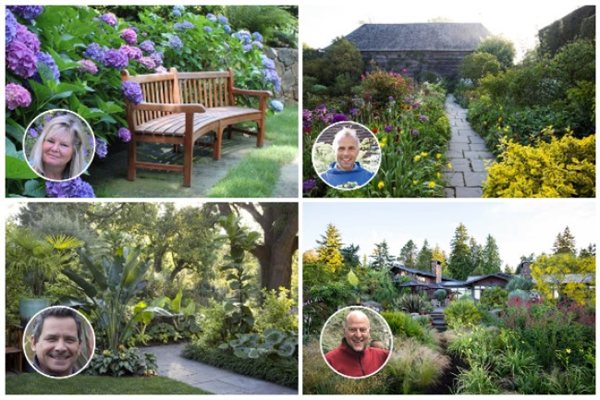
SIDE YARD IDEAS
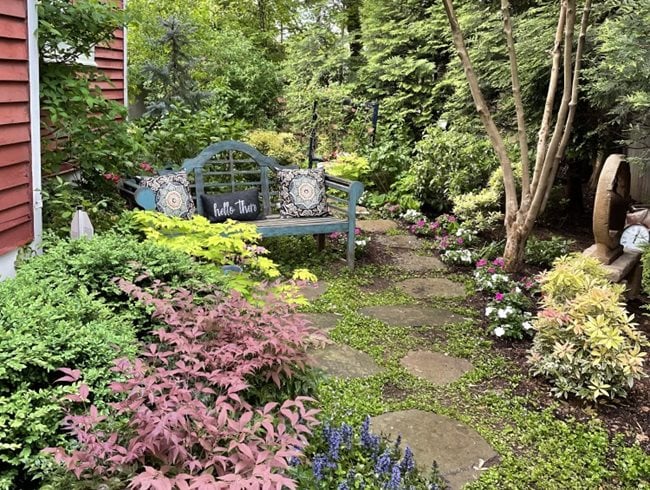
An intimate side yard oasis is also a spot for morning coffee where this homeowner can watch people go by. It's both private and visible at the same time. An existing kousa dogwood was limbed up to open the space, and a rich palette of shade plants completes the area. Photo by: Alli Guleria. (See more of this garden.)

A bright red ceramic container creates a focal point in this side yard, giving a place for the eye to rest. Designer: Susan Fries. Photo: Janet Loughrey.
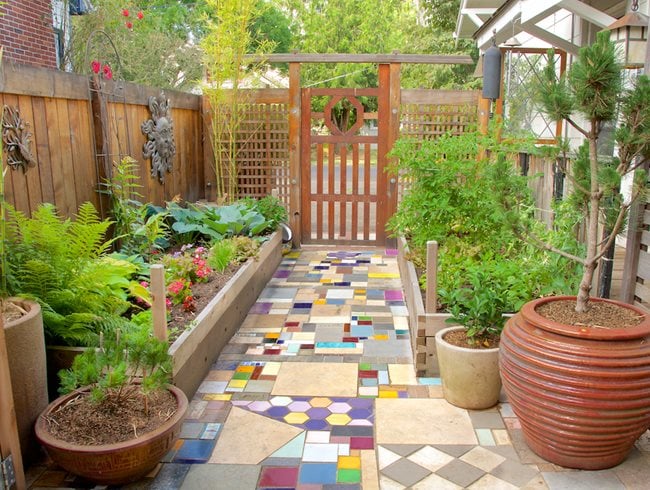
An underutilized driveway was converted into a functional and engaging side yard. Brightly colored tiles liven up the space, while raised beds contain vegetable and ornamental plantings. Designers: David and Lori Lochelt. Photo: Janet Loughrey.
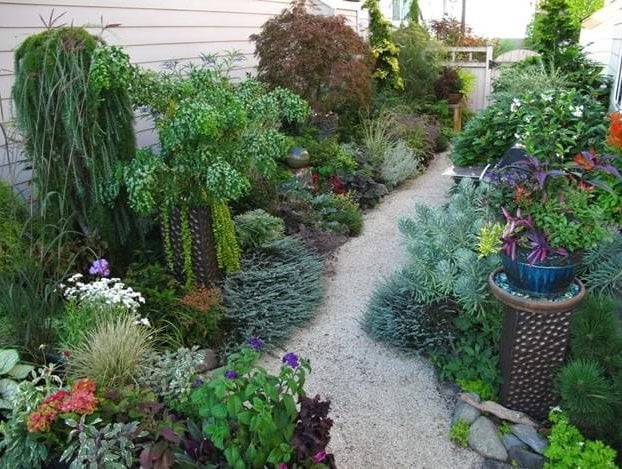
Instead of a simple pass through, small-scale trees were added to this side yard to add interest. A large container hold a Japanese maple, and a weeping larch is a visitor favorite all year. Photo by: Christina Salwitz. (See more of this garden.)
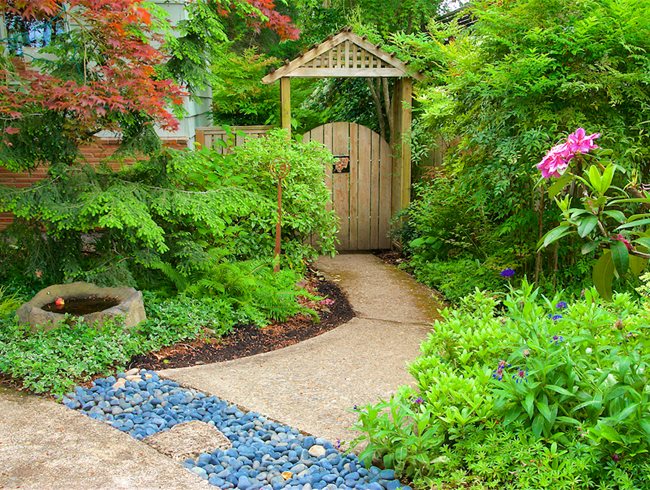
A decorative wooden gate marks the entrance to this inviting side yard, encouraging visitors to linger and explore. Gardener: Ann Murphy. Photo: Janet Loughrey.
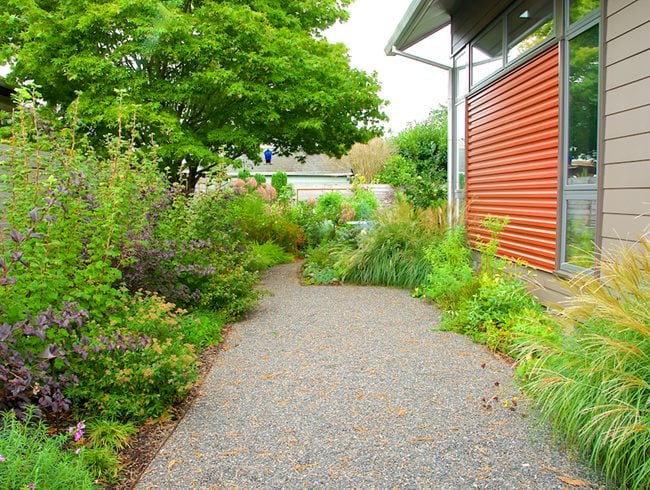
Lush plantings adorn this shaded side yard. A wide gravel pathway comfortably accommodates a wheelbarrow to haul mulch or compost from the front to the backyard. Gardener: Virginia Malone. Designer: Marina Wynton. Photo: Janet Loughrey.
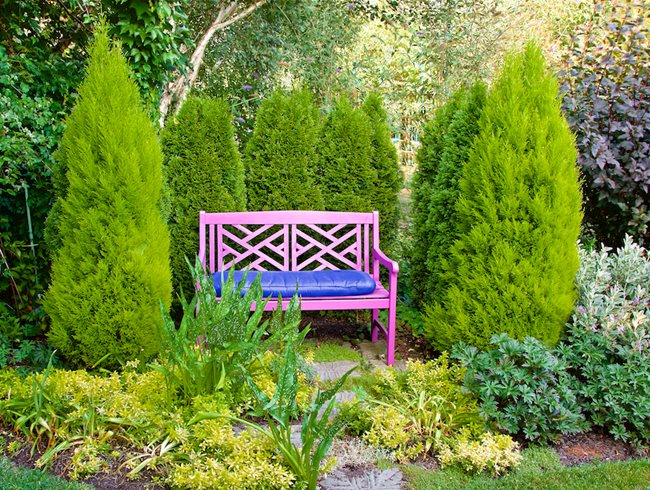
A side yard seating area with lush plantings offers a place for quiet contemplation. Designer: Nancy Cutler. Photo by: Janet Loughrey.

Alternating stone pavers, tall containers and layered plantings create an engaging vignette in this narrow side yard. A low stone wall extends into the back yard, unifying the two spaces. Designer: Adriana Berry. Photo: Janet Loughrey.
See how these tips fit into a full outdoor plan—visit our Landscape Design hub for more expert advice.
RELATED:
Zen Garden Design
How to Landscape a Sloped Yard
Moon Garden Design
Front Yard Ideas & Landscaping
Backyard Ideas & Landscaping
